The Glory of the Baroque: San Esteban
The San Esteban is among the oldest churches in Valencia, and has become a popular spot for baptisms. Along with the nearby San Martín and San Juan de la Cruz, it forms part of the city’s trio of exquisite baroque churches.

Like most ancient structures, the life of the San Esteban has had a few distinct phases. Before the arrival of the Christians, this had been the site of one of the Moorish city’s principal mosques. In the 13th-century, the mosque was demolished and replaced by a small wooden structure, which was the original San Esteban. The monumental stone church we see today was built in the late 15th century, during Valencia’s Golden Age, and its Baroque decorations and carvings were added two centuries after that, between 1679 and 1682.
Despite its size and central location, the San Esteban is surprisingly difficult to find. Its primary entrance is at the back of a small plaza, hidden by the surrounding buildings. And from the outside, the church isn’t at all impressive; it’s just this big, unseemly stone block. But perhaps that was the intention. With lowered expectations, the San Esteban’s interior is all the more stunning.
As opposed to the white-and-gold color scheme of both the San Martín and San Juan de la Cruz, the San Esteban opts for white and light blue, and it might be the most lovely of the bunch. Every inch of bare wall space is covered in intricate floral patterns, with terracotta angels crowning the supporting columns. The church is light and spacious, and the soft blue color immediately puts you at ease. This isn’t a dark and somber hall of worship, where the only sounds are the priest’s voice echoing off the walls and the shuffling of old lady feet down the empty aisles, but a place of warmth and familiarity.

That might help explain its continuing popularity as a place for baptisms. San Esteban is where the city’s patron saint, San Vicente Ferrer was baptized, and the tradition continues into today. It’s no longer used, but Ferrer’s baptismal font is still in the back of the church. On weekends, the aisles are packed with one baptism party after the other and, although this makes visiting difficult, it’s nice to see this historic old church being used for such a happy occasion.
Mass begins at 19:30, every weekday. If you want to visit, it’s best to show up slightly before the ceremony begins, to avoid disturbing worshipers.
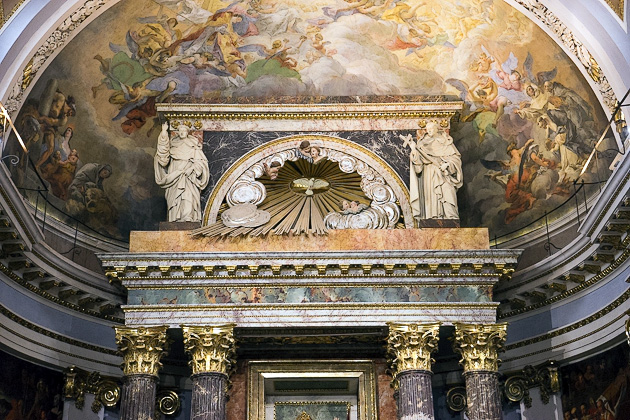
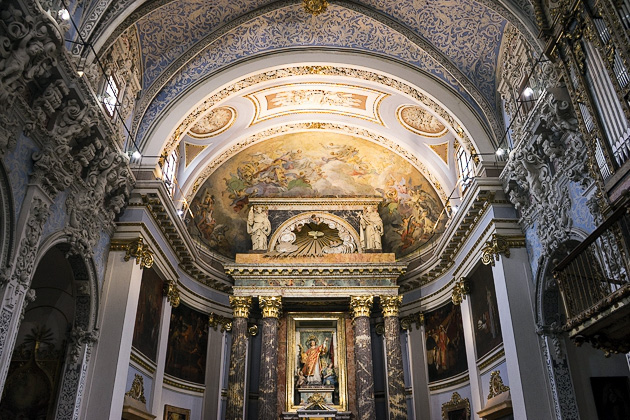
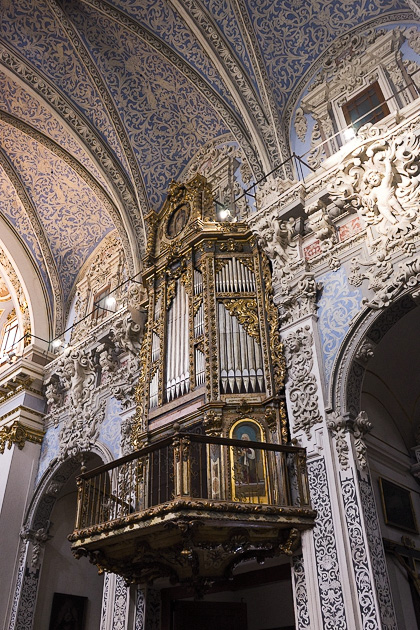
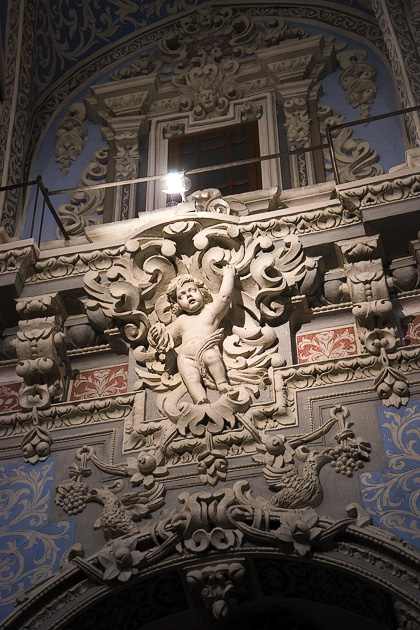
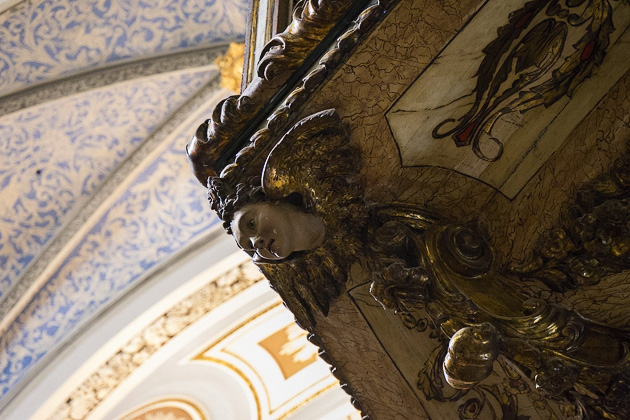
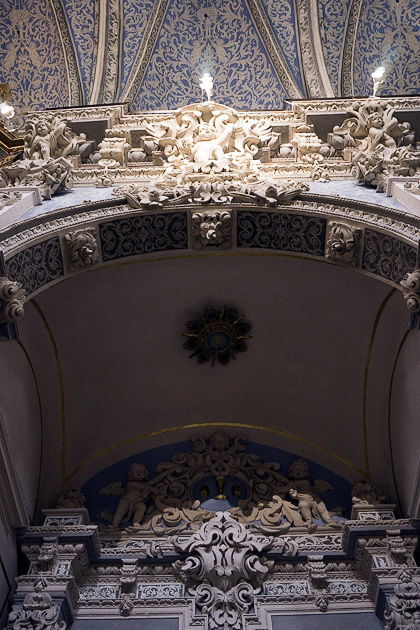
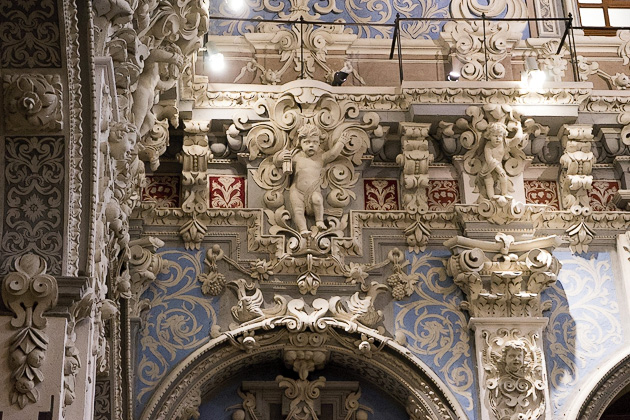
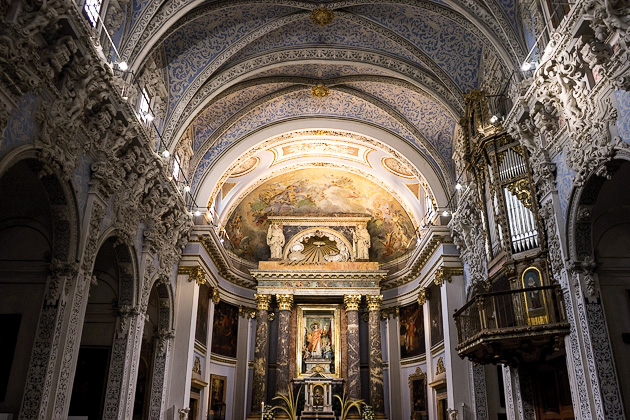
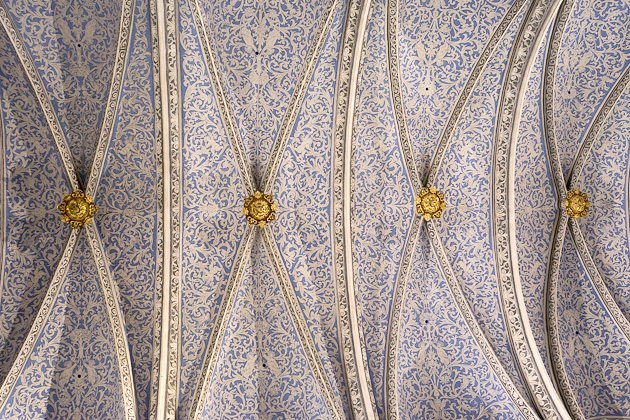
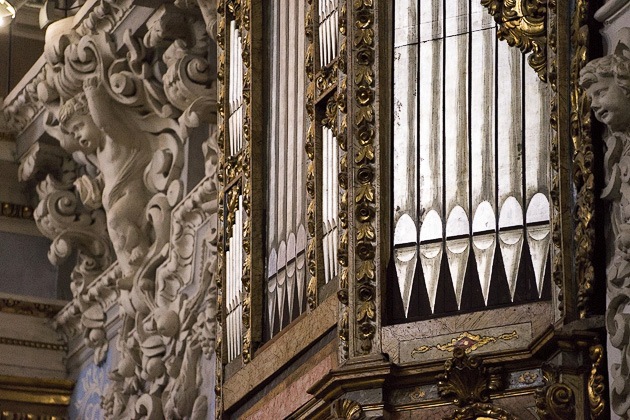
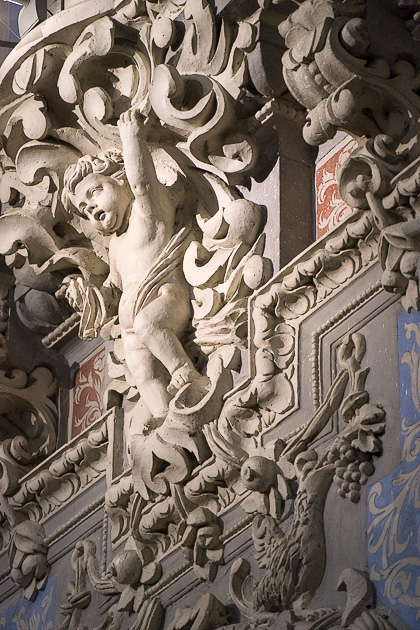
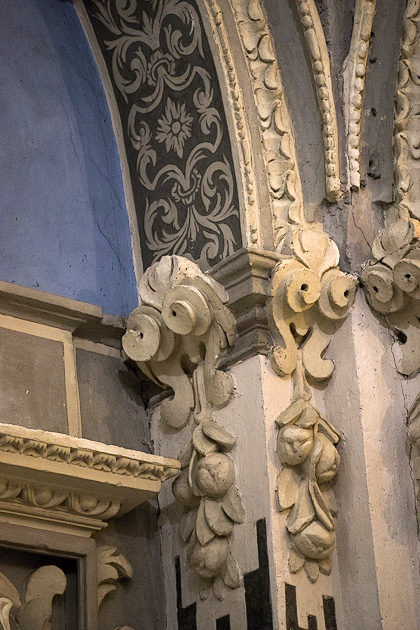
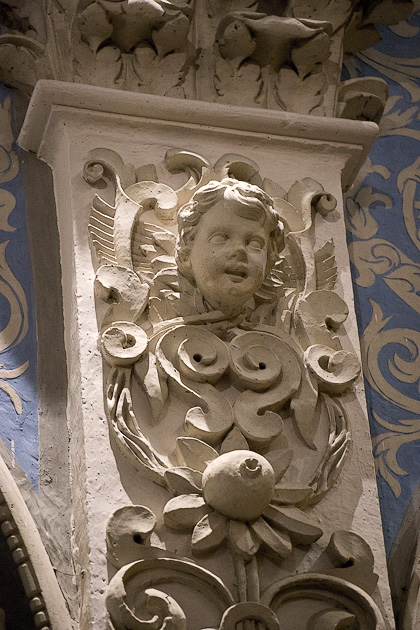
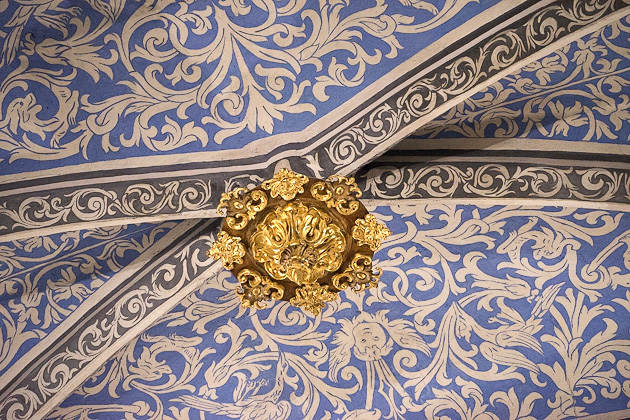
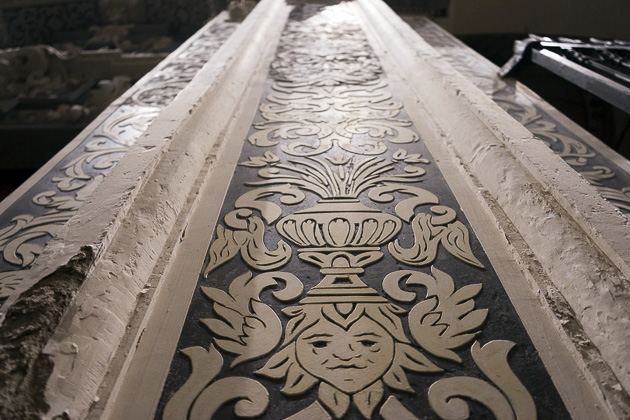


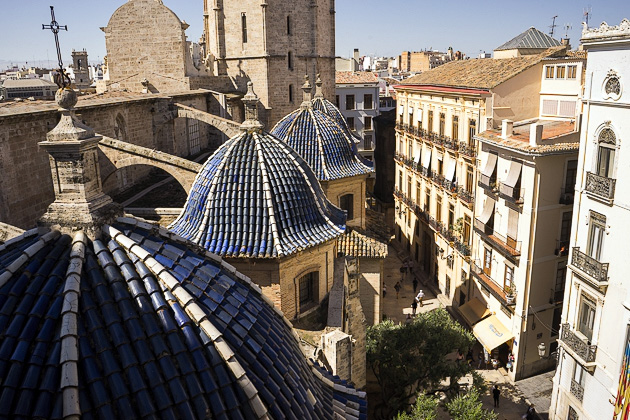
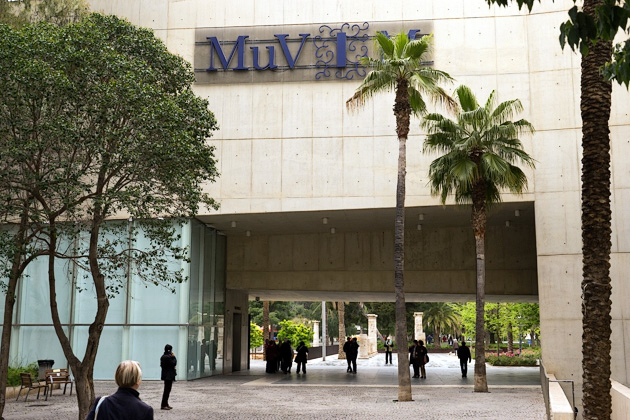
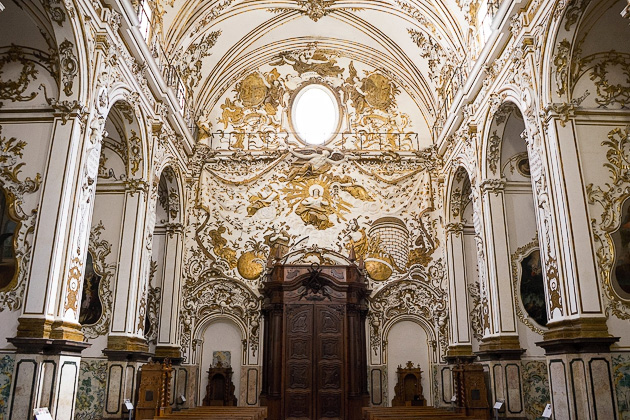

Pingback: The Glory of the Baroque – San Juan de la Cruz | For 91 Days in Valencia – Travel Blog
You know, for all of the times I have walked by that church, I never thought to go inside to see what it looked like. I definitely need to explore more of the churches in Valencia! Great content! Love the photos… the color and the lighting really provided some interesting images!